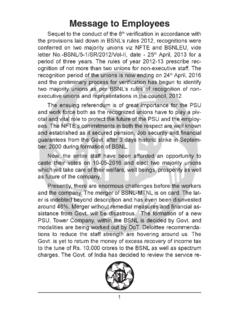Transcription of Relationship between acetaldehyde concentration …
1 J Appl Oral Sci. between acetaldehyde concentration in mouth air and tongue coating volumeAya YOKOI1, Takayuki MARUYAMA1,2, Reiko YAMANAKA3, Daisuke EKUNI1, Takaaki TOMOFUJI1,4, Haruhiko KASHIWAZAKI5, Yutaka YAMAZAKI5, Manabu MORITA11- Department of Preventive Dentistry, Okayama University Graduate School of Medicine, Dentistry and Pharmaceutical Sciences, Okayama, Center for Innovative Clinical Medicine, Okayama University Hospital, Okayama, Division of Hospital Dentistry, Central Clinical Department, Okayama University Hospital, Okayama, Advanced Research Center for Oral and Craniofacial Sciences, Okayama University Dental School, Okayama, Gerodontology, Department of Oral Health Science, Graduate School of Dental Medicine, Hokkaido University, Sapporo, address: Daisuke Ekuni - Department of Preventive Dentistry, Okayama University Graduate School of Medicine, Dentistry and Pharmaceutical Sciences - 2-5-1 Shikata-cho - Kita-ku - Okayama - 700-8558 - Japan - Phone: +81 86 235 6712; Fax: +81 86 235 6714 - e-mail: June 3, 2014 - Modification: October 28, 2014 - Accepted: October 30, 2014 Objective: acetaldehyde is the first metabolite of ethanol and is produced in the epithelium by mucosal ALDH, while higher levels are derived from microbial oxidation of ethanol by oral microflora such as Candida species.
2 However, it is uncertain whether acetaldehyde concentration in human breath is related to oral condition or local production of acetaldehyde by oral microflora. The aim of this pilot study was to investigate the Relationship between physiological acetaldehyde concentration and oral condition in healthy volunteers. Material and Methods: Sixty-five volunteers (51 males and 14 females, aged from 20 to 87 years old) participated in the present study. acetaldehyde concentration in mouth air was measured using a portable monitor. Oral examination, detection of oral Candida species and assessment of alcohol sensitivity were performed. Results: acetaldehyde concentration [median (25%, 75%)] in mouth air was ( , ) ppb. acetaldehyde concentration in participants with a tongue coating status score of 3 was significantly higher than in those with a score of 1 (p< ).
3 After removing tongue coating, acetaldehyde concentration decreased significantly (p< ). acetaldehyde concentration was not correlated with other clinical parameters, presence of Candida species, smoking status or alcohol sensitivity. Conclusion: Physiological acetaldehyde concentration in mouth air was associated with tongue coating : acetaldehyde . Tongue. Bacteria. Cross-sectional metabolism of alcohol by aldehyde dehydrogenase (ALDH) principally occurs in the liver4, alcohol metabolism is also known to be carried out in other areas of the body. For example, acetaldehyde is produced in the epithelium by mucosal ALDH2, while higher levels are derived from microbial oxidation of ethanol by oral microflora such as Candida species9,10,12,17,23. Thus, the effects of acetaldehyde on the oral cavity can be local, and oral hygiene may be linked to local production of acetaldehyde by oral is known to be carcinogenic and to cause mutations in DNA25.
4 Long-term exposure to acetaldehyde , even at physiological concentrations , may affect cell activity and cause mutations in DNA. For example, physiological concentrations of acetaldehyde (220 ppb) influence cell proliferation in rabbit aortic myocytes after long-term exposure27. Therefore, physiological concentrations of acetaldehyde in oral cavity might affect cell activity in both humans and animal one study has reported data on physiological concentrations of acetaldehyde in human breath ( ppb) in a small number of subjects (n=20)5. However, the Relationship between physiological concentrations of acetaldehyde in human breath and oral condition is uncertain. Thus, 2015;23(1):64-70J Appl Oral Sci. 65we hypothesized that physiological concentrations of acetaldehyde in human breath are related to oral condition or local production of acetaldehyde by oral microflora.
5 The aim of this study was to investigate the physiological concentrations of acetaldehyde in human mouth air and the Relationship between these concentrations and oral AND METHODSP articipantsAt the Dental Clinic of Okayama University Hospital, sixty-five volunteers (51 males and 14 females, aged from 20 to 87 years old; mean age years) without respiratory, digestive system, otorhinolaryngologic or liver disease and not undergoing any antibiotic or other antimicrobial therapy participated in the present study, when the dentists asked the patients to participate the research. The recruitment period was from October 2013 to August 2014. The study was approved by the Ethics Committee of Okayama University Graduate School of Medicine, Dentistry and Pharmaceutical Sciences (No.)
6 1461, August 28, 2012). Written consent was obtained from all of acetaldehydeWe used the Sensor Gas Chromatograph SGEA-P2 (FIS Inc., Itami, Japan). The system consists of pump, filter, flow control, column, detector (semiconductor gas sensor) and sample injection area (manual injection with a syringe). As a high-sensitivity semiconductor gas sensor is used as a detector, ppb level measurement is possible. Using a syringe, injection of sample gas (5 mL) starts the measurement automatically. Measurement was completed in 8 minutes. The monitor uses ambient air as a carrier gas, and a high-pressure gas cylinder is not necessary. To assess the reproducibility of the portable monitor, 100-10,000 ppb acetaldehyde was used for calibration. Measurement was performed in duplicate.
7 Both intra- and inter-assay coefficients of variation were below 5%.Participants were advised to abstain from food or drink and to refrain from their standard oral hygiene practice on the morning of the day of measurements. Participants were also instructed to refrain from eating strong smelling foods for at least 48 h, from using strong perfumes for 24 h, from smoking for 24 h and from drinking alcohol for 12 h prior to measurements. Actual measurements were conducted in the morning, between 8 and 9 am. Participants kept their mouths closed for 3 min prior to measurement of mouth air with a syringe19 (Figure 1). During collection, participants breathed through their nose. As acetaldehyde is highly volatile, we avoided air contamination in the oral cavity as much as possible.
8 Sample gas in the syringe was then injected immediately and also investigated acetaldehyde concentration changes after tongue coating removal in 6 participants (5 males and 1 female, aged from 27 to 65 years old; mean age, years) with a tongue coating status score of 3. In addition, the diurnal variation [morning ( between 8:00 and 9:00), noon ( between 12:00 and 1:00) and evening ( between 17:00 and 18:00)] in another 6 participants (5 males and 1 female, aged from 27 to 41 years old; mean age, years) was examinationProbing pocket depth (PPD) and clinical attachment level (CAL) were determined at six sites (mesiobuccal, midbuccal, distobuccal, mesiolingual, midlingual and distolingual) on all teeth using a color-coded probe (Hu-Friedy, Chicago, IL, USA).
9 Sites that bled upon gentle probing (25 g probing force) were recorded, and the proportion of sites with bleeding on probing (BOP) was measured in each participant. The plaque control record (PCR) was measured using erythrosine staining, and was recorded with respect to their relative location to the gingival margin at four sites (mesial, distal, buccal and lingual) around each tooth22. Tongue coating status was assessed according to distribution area as follows: score 0: none visible; 1: less than one Figure 1- Collection of acetaldehyde . Participants kept their mouths closed for 3 min. The syringe was tightly held between lips to avoid contamination of the oral cavity with outside airRelationship between acetaldehyde concentration in mouth air and tongue coating volume2015;23(1):64-70J Appl Oral Sci.
10 66third of the tongue dorsum surface covered; 2: less than two thirds; 3: more than two thirds18. All clinical procedures were performed by four trained and calibrated dentists (A. Y., T. M., T. T. and D. E.). Intra- and inter-examiner agreement for the oral examination (tongue coating status, PPD and CAL) was good, as evaluated by kappa statistics of more than of Candida speciesWe used a CHROM agar Candida medium (Kanto Chemical Corp., Inc., Tokyo, Japan) (pH ) to detect Candida albicans (C. albicans), Candida tropicalis (C. tropicalis) and Candida krusei (C. krusei)21. The medium comprised (per liter) peptone (10 g), glucose (20 g), agar (15 g), chloramphenicol ( g) and Chromogenic ix (2 g), and was prepared in accordance with the manufacturer s instructions.













